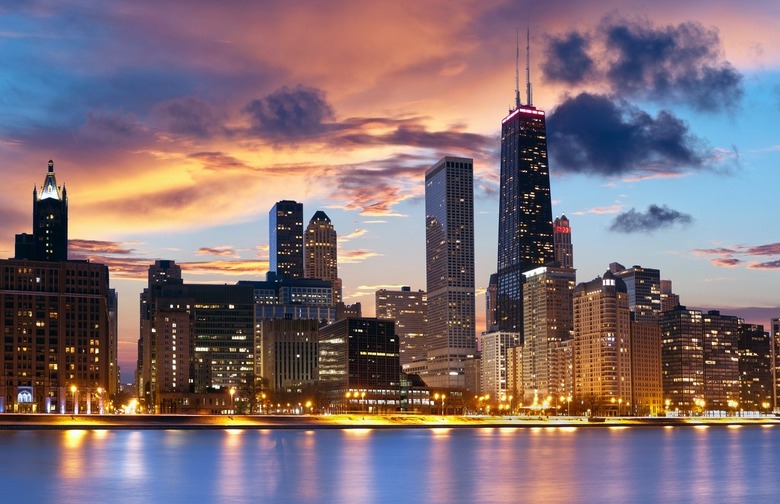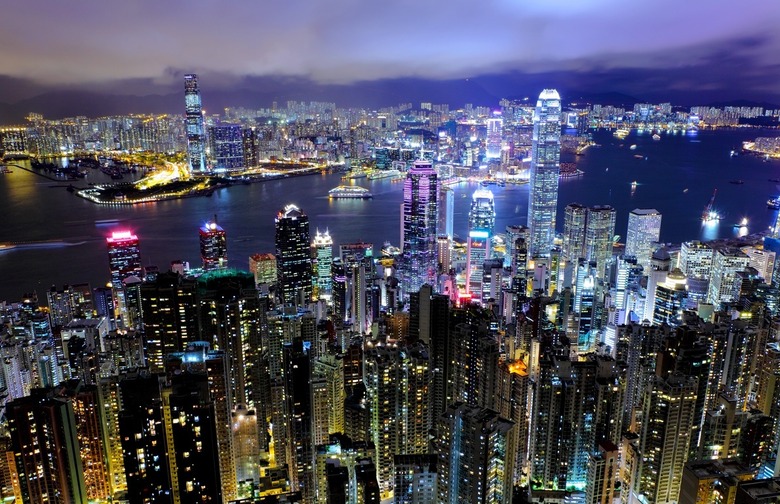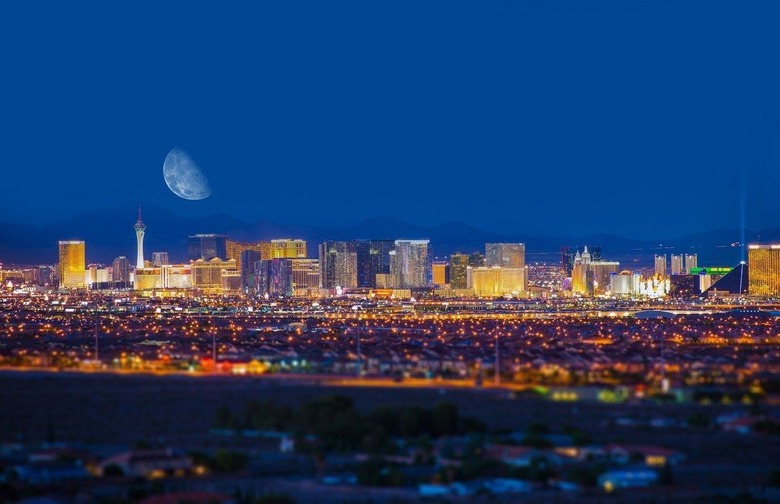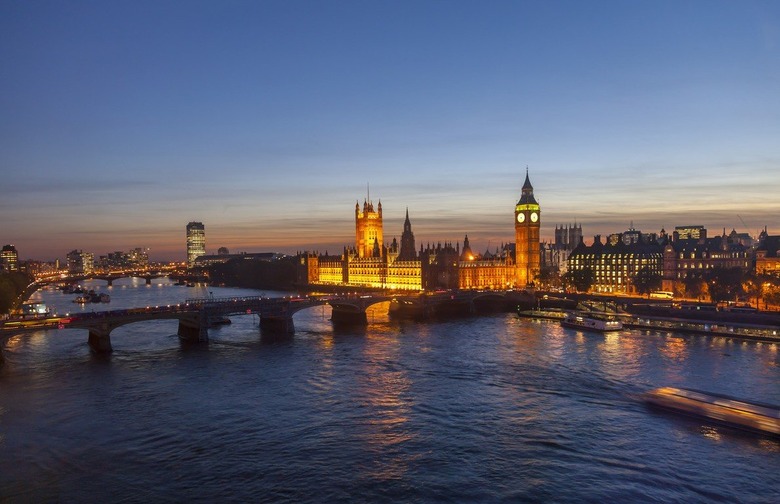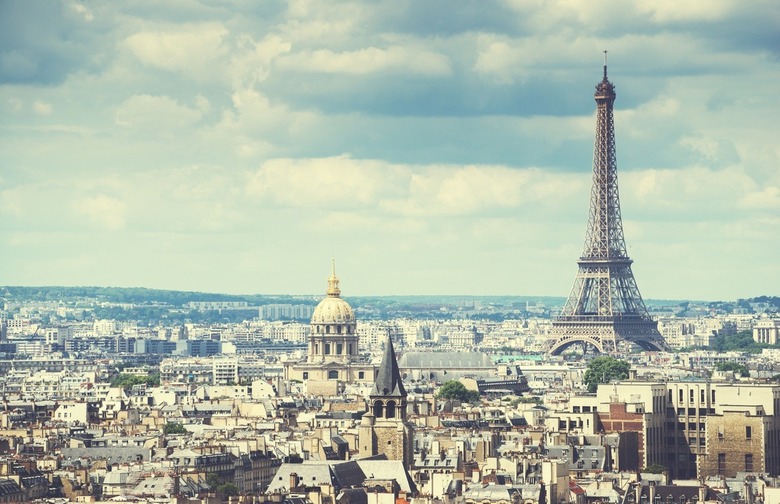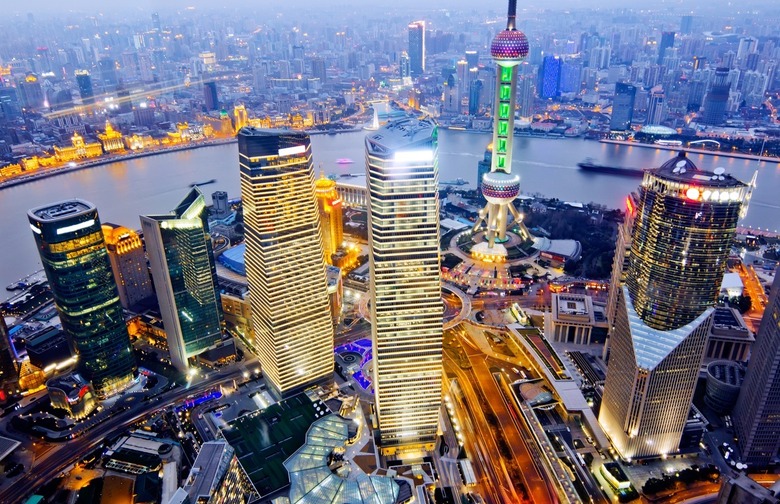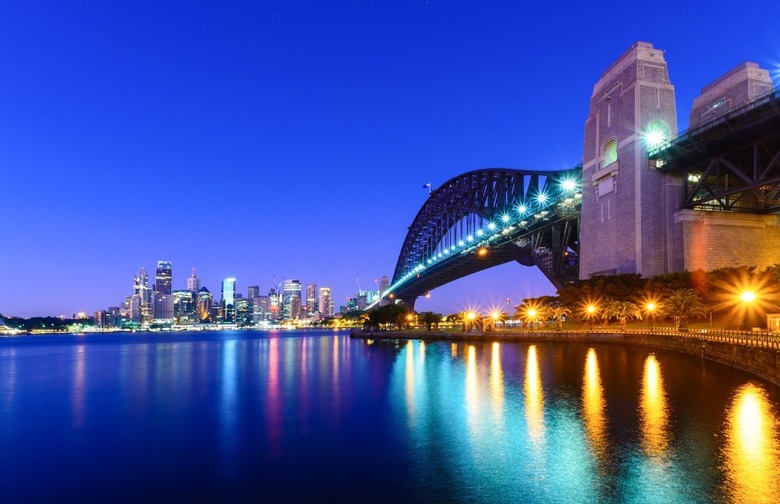The Most Iconic Skylines In The World (Slideshow)
As far as buildings go, Chicago needs only one to distinguish its skyline, and most people don't even know the name of it. To be honest, I still call the 108-story black skyscraper the "Sears Tower," even though it was renamed the Willis Tower seven years ago. In the end, the name doesn't matter (sorry, Willis Group); all that's important is that people see the dual antennae at the top of America's second-tallest tower and think "Chicago." If a skyline photo is taken a bit further inland and includes a view of the Chicago River, all the better.
Why do so many celebrities hate Chicago's famous deep-dish pizza?
Dubai
If Miami won the lottery, it would look like Dubai. It's basically a beach town that decided it wanted to be a city. The only difference is that Miami is an oasis that was built in swamp country and Dubai is an oasis that was built in the desert. Seriously, have you seen photos of Dubai from a few decades ago? There was nothing there. However, they've really taken the whole city idea and ran with it, creating a metropolis of impossibly tall skyscrapers and uniquely shaped innovative structures. In the former category, there's the Burj Khalifa (currently the tallest building in the world), the Marina 101 (the new tallest residential building in the world), and the Princess Tower (the former tallest residential building in the world) — and those are just the buildings that are more than 100 stories tall. Skyline views also usually include the sailboat-shaped Burj Al Arab and the twin Emirates Towers. Again, it's worth noting that of the some 100 buildings that are 180 meters (590 feet) tall or higher, only two were built before the year 2000.
Hong Kong
Were you impressed just now when you read that Dubai has about 100 buildings taller than 180 meters? Well the United Arab Emirates city was probably inspired by Hong Kong, which is the king of the skyscraper cities with a whopping 143 towers at that same height or higher. Can we throw some more numbers at you? Hong Kong also has no fewer than 1,294 skyscrapers taller than 100 meters (328 feet) and 7,829 that are classified as "high-rise buildings." And this is in a city that only covers a modest 50,000 acres of land. The interesting thing about Hong Kong is that you don't even need to recognize any specific buildings to identify the city. If you see an impossibly large number of buildings in a small space (and skyscrapers across the bay from more skyscrapers), then you're probably looking at Hong Kong.
Las Vegas
It's hard to deny that Las Vegas is recognizable, as few cities pack so many bright lights into such a small space. Plus, so many of the buildings are identifiable — mostly because their names are emblazoned in large, illuminated letters on the tops and sides of the structures. Additionally, most of the buildings are hotels and casinos, meaning they are quite wide and not very tall, and somewhat similar in height. This uniformity makes Las Vegas appear even larger than life from a distance.
It also helps that the city has a pyramid, part of the New York City skyline, a giant hot-air balloon, and the second-most famous Eiffel Tower in the world.
Click here for the 10 craziest things you can do on your next trip to Las Vegas.
London
It's a bit tricky to get all of London's landmarks together in one photo, but you really only need one iconic structure to identify the city. Take your pick from the Elizabeth Tower (formerly known as the Clock Tower, which holds the famous bell nicknamed Big Ben), the enormous London Eye (Europe's tallest Ferris wheel), the historic Tower Bridge (spanning the Thames), and the 95-story Shard (a newcomer that just opened in 2013).
New York City
Cities around the world are constantly changing, but it's safe to say that no iconic skyline has ever taken a bigger hit than New York City did on Sept. 11, 2001. The city lost two world-famous skyscrapers (and almost 3,000 lives) in a matter of minutes and some wondered if it would ever recover. Fast forward through 15 years and a whole lot of politics and red tape, and New York's skyline has once again reached star status with One World Trade Center's Freedom Tower shining as a 1,776-foot-tall beacon. Of course, New York also has the 102-story Empire State Building and 77-story Chrysler Building, as well as the Brooklyn Bridge and Statue of Liberty holding down the harbor, so it's not like the city has ever suffered from a lack of recognizability.
Click here to see the additions made to Chelsea Market this summer.
Paris
Paris isn't a city of skyscrapers, but that doesn't hurt its iconic status one bit. The Eiffel Tower is easily one of the most famous landmarks in the world (and the tallest in the city), and when joined by the Arc de Triomphe, the golden dome of Les Invalides, and maybe some shots of Notre Dame, The Louvre, or the Seine, and there's no mistaking this fantastic French city.
London's nude pop-up restaurant in coming to Paris. Click here for the naked truth.
Rio de Janeiro
Of course we all have Brazil on the brain following the recent Olympic Games, but Rio de Janeiro was already an icon as far as skylines go. And the weird part is, it really has nothing to do with the buildings. The most recognizable parts of Rio are the mountains of Corcovado ("hunchback" in Portuguese), Sugarloaf, and the Two Brothers, with Corcovado as the most famous due to its enormous height and the 125-foot-tall statue of Christ the Redeemer standing atop it. The natural landscape of the Guanabara Bay and the tall buildings extending almost right up to the water's edge are also unmistakable.
Click here for nine non-Olympic things to do in Rio de Janeiro and Brazil in general.
Shanghai
How is it that so many people can identify the Shanghai skyline? The city probably owes that to the television broadcasts every year on New Year's Eve that show Shanghai as one of the first places that celebrate the changing calendar — with obligatory fireworks, of course. Fitting that Shanghai rings in the New Year before everyone else, since the city's skyline actually makes it look like a futuristic land, thanks to the LED-adorned Oriental Pearl Tower, the twisted design of the 128-story Shanghai Tower (the second-tallest building in the world), and the 101-story Shanghai World Financial Center — which looks like a sleek, shiny, giant bottle opener. If you were to ask someone to draw up what they think "Tomorrowland" would look like, they'd probably sketch something pretty close to what actually exists in Shanghai.
Speaking of Tomorrowland, check out the sky-high prices at the recently opened Shanghai Disneyland.
Sydney
Aside from the super skinny, 1,014-foot-tall Sydney Tower, none of the tall structures in Sydney are very distinct to the average person. However, as most skyline photos are taken from the water, very few photos do not contain the famous shell-like architecture of the Sydney Opera House (Editor's Note: Except, of course, for the one we used), which is one of the most iconic buildings in the world. Just across the water is the Sydney Harbour Bridge, which is also very recognizable. Seeing all this reflected in water that always appears to be a beautiful blue makes this one of the most photogenic cities in the world.
Click here for five things about Australia that might surprise you.
